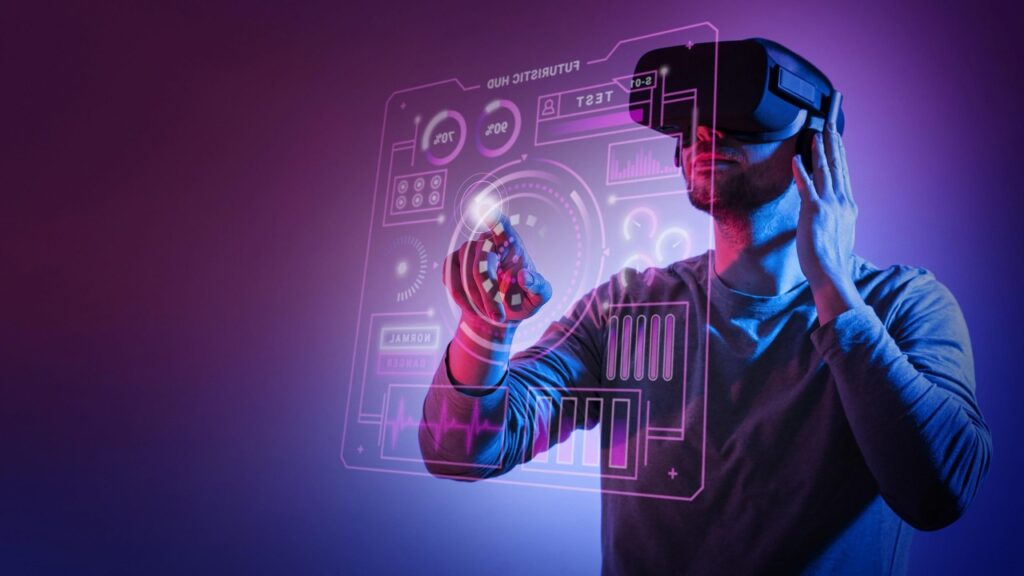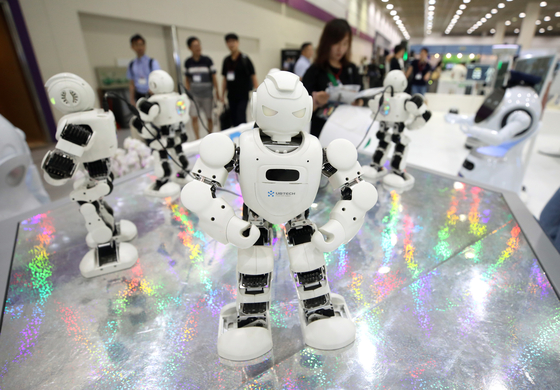The Next Wave: Top 5 Upcoming Technologies Shaping the Future of the USA
Ladies and gentlemen, buckle up! You are about to ride the crest of change and plunge into the cyclone of innovation. This is not your typical techie show – this is “The Next Wave: Top 5 Upcoming Technologies Shaping the Future of the USA.” In the following minutes, you will learn – see, and hear – all you need to know about the latest advancements in our science. From artificial intelligence that transcends human consciousness to gene editing acceptable or morally controversial, get ready to learn from the top 5 shaping our technological future. In other words, tune in and see how soon everything from driving to healthcare and urban planning will change.

In the age of breakthroughs and fast development of technological progress, the United States is the leader of innovations. It introduces new technologies that have the potential to revolutionize any industry, as well as to change how people work, live, and communicate. Read about five advanced technologies that will influence the USA landscape the most in the following blog.
1-5G technology: Yes, 5G technology is a solid contender for the top five list! Here’s why it’s a significant player in defining the future of the United States:
Ultra-fast speeds: Imagine downloading a movie in seconds or enjoying lag-free virtual reality. 5G promises considerable increases in data transfer speeds above 4G, transforming how we access and interact with information.
Unprecedented Capacity: 5G allows the network to accommodate a significantly bigger number of devices connecting at the same time. This opens the door for the Internet of Things (IoT) to genuinely thrive, with billions of sensors and gadgets connecting effortlessly.

Low Latency: Latency is the time it takes for data to transit between devices. 5G has ultra-low latency, allowing real-time applications such as remote surgery, self-driving cars with lightning-fast reflexes, and improved cloud gaming experiences.
Smart Cities and Infrastructure: 5G technology has the potential to serve as the foundation for smart cities, interconnecting and optimizing everything from traffic lights to waste management systems. This might result in more effective resource management, increased public safety, and a more sustainable future for cities.
The Future of Work and Entertainment: With its fast speeds and low latency, 5G has the potential to change the way we work and play. Imagine collaborating in real-time on projects over long distances or experiencing immersive entertainment like never before.
2-Artificial Intelligence (AI) and Machine Learning: A Powerful Duo Shaping the Future:
Artificial intelligence (AI) and machine learning (ML) are often used interchangeably, but they represent a powerful duo working in tandem to revolutionize many aspects of our lives.
Artificial Intelligence (AI):
- Broader Concept: AI encompasses the entire field of creating intelligent machines that can simulate human cognitive abilities like learning, problem-solving, and decision-making.
- Wide Range of Applications: AI can power various technologies, from chatbots and virtual assistants to self-driving cars and complex medical diagnostic systems.
- Focus on Goals: AI systems are programmed with specific goals in mind, and they learn and adapt to achieve those goals more effectively over time.
Machine Learning (ML):
- A subset of AI: Machine learning is a specific technique used to achieve AI. It allows machines to learn from data without explicit programming.
- Data-Driven Learning: ML algorithms analyze vast amounts of data to identify patterns and make predictions. The more data they process, the more accurate their predictions become.
- Focus on Learning: Machine learning is all about the learning process itself. By feeding the algorithm more data, it continuously improves its ability to perform a specific task.

The Synergy of AI and Machine Learning:
- Combined Power: When combined, AI and machine learning create a powerful force for innovation. AI provides the overall framework and goals, while machine learning empowers the system to learn and adapt continuously.
- Real-World Impact: This powerful duo is already transforming industries like healthcare, finance, and manufacturing. For example, AI-powered systems with machine learning capabilities can analyze medical images for early disease detection or personalize investment strategies based on complex market data.
AI and Machine Learning in the USA’s Future:
The proper development and deployment of AI and machine learning have enormous potential for the United States.
Economic Growth: These technologies can spur innovation and productivity in a variety of industries, resulting in economic growth and employment creation in new fields.
Improved Public Services: Artificial intelligence and machine learning can improve public services such as education and healthcare by personalizing learning experiences and streamlining administrative procedures.
AI can help scientists advance their research by analyzing large datasets and identifying hidden patterns that could lead to discoveries in health, materials science, and other areas.
Challenges and Considerations:
Ethical Implications: The development and application of AI raises ethical questions about algorithm bias, job displacement due to automation, and the possible misuse of powerful AI systems. Addressing these challenges is critical to responsible AI development.
Transparency and Explainability: As AI systems get more complex, maintaining transparency in their decision-making processes is critical for fostering confidence and understanding how they reach their conclusions.
By carefully leveraging the capabilities of AI and machine learning, the United States can position itself at the forefront of technological innovation, thereby building a brighter future for its people.
3-Quantum Computing: Unlocking a New Era of Possibilities:

While regular computers rely on bits (either 0 or 1), quantum computers use the strange rules of quantum mechanics to do calculations in a completely different manner. This has the potential to transform many fields, making it a strong contender for the Top 5. Here is why.:
- Harnessing the Weirdness of Quantum Mechanics: According to quantum mechanics, subatomic particles can exist in a condition known as superposition, which allows them to be both 0 and 1. This enables qubits (the quantum version of bits) to investigate multiple options simultaneously, resulting in huge speedups for specific problems.
- Untangling Complexities: Certain problems that take regular computers years to solve could be tackled by quantum computers in a fraction of the time. This is particularly relevant for tasks involving complex simulations, like:
- Drug Discovery: Simulating how molecules interact could lead to faster development of life-saving medications.
- Materials Science: Designing new materials with specific properties for applications like superconductors or ultra-efficient solar cells becomes a possibility.
- Financial Modeling: Quantum computers could analyze vast amounts of financial data to identify complex patterns and make more accurate predictions.
- A Race for Supremacy: Building a reliable and powerful quantum computer is a considerable technical hurdle. However, the potential rewards are enormous, resulting in a race for global dominance. The United States has a strong presence in quantum computing research, and advances in this area could lead to considerable economic and scientific benefits.
Challenges and Considerations:
- Early Stage: Quantum computing is still in its early stages of development. Building large-scale, reliable quantum computers remains a significant technical hurdle.
- Limited Applications: Quantum computers are not designed to replace traditional computers entirely. They excel at specific types of problems, and identifying those problems where they offer a clear advantage is crucial.
- Workforce Development: As quantum computing matures, there will be a need for a skilled workforce to develop and utilize these machines. Investing in education and training programs will be essential.
Overall, quantum computing has the potential to usher in a new era of scientific research and technological advancement. By overcoming technological hurdles and focusing on practical applications, the United States may establish itself as a pioneer in this transformative subject.
4-Advanced Robotics: The Rise of Collaborative and Intelligent Machines:
Yes, “Advanced Robotics: The Rise of Collaborative and Intelligent Machines” is an appealing title for your top five list. It brilliantly depicts the spirit of this disruptive technology by illustrating the change from solitary industrial robots to machines capable of collaboration and even some kind of intelligence.

Here’s how you can expand on this concept:
- From Workhorses to Partners: Begin by contrasting traditional industrial robots, which are dependable but rigid workhorses, with modern robots. These complex machines have superior sensors, artificial intelligence, and machine learning capabilities, which allow them to adapt to changing situations and even “learn” from experience.
- The Power of Collaboration: Highlight the collaborative nature of modern robotics. These machines are not intended to replace humans, but rather to work alongside them, combining their skills to accomplish previously unthinkable tasks. Imagine robots assisting surgeons during intricate procedures or collaborating with factory workers on assembly lines.
- Examples Across Industries: Showcase the versatility of advanced robotics by providing real-world examples across various sectors:
- Manufacturing: Robots performing delicate tasks alongside humans, improving efficiency and safety.
- Logistics: Automated robots navigating warehouses, optimizing inventory management, and streamlining order fulfillment.
- Healthcare: Robotic assistants help with surgery, provide companionship for the elderly, or perform delicate surgical tasks.
- Agriculture: Robots tending to crops, harvesting produce, or assisting with livestock management.
- The Rise of Cobots: Introduce the concept of cobots (collaborative robots) – smaller, adaptable robots designed for safe human-robot interaction. Highlight their ease of programming and potential for a wider range of applications.
- The Future of Work: Discuss the impact of advanced robotics on the future of work. While some jobs might be automated, new opportunities will arise in areas like robot design, maintenance, and programming. Focus on the need for workforce development and reskilling programs.
- Benefits for the USA: Explain how the US can benefit from responsible development and deployment of advanced robotics:
- Manufacturing Renaissance: Revitalize American manufacturing by increasing overall productivity and global competitiveness.
- Enhanced Safety: Robots handling dangerous or repetitive tasks, reducing workplace injuries and fatalities.
- An Aging Population: Advanced robots assisting with elder care and providing companionship for seniors.
- Challenges and Considerations: Acknowledge the challenges:
- Ethical Concerns: Job displacement, potential weaponization, and the need for clear guidelines on robot behavior and interaction with humans.
- Regulation and Oversight: The need for frameworks to ensure safe and responsible development and deployment.
By concluding with the potential for humans and machines to work together to create a better future, you can leave a positive and inspiring message about the transformative power of advanced robotics
5-Powering the Future: A Dive into Clean Energy Technologies:
Welcome to the one-stop store for everything clean energy! As we confront the urgent concerns of climate change and resource depletion, renewable energy solutions are emerging as the heroes we require. But what precisely are these technologies, and how may they transform how we power our lives? We’ll look at the various sorts of sustainable energy technology, including their promise and limitations. We’ll also talk about the practical benefits of being green, such as lowering our carbon footprint and ensuring a more sustainable future for future generations.

Shining a Light on Solar Energy:
Imagine harnessing the sun’s power to light your home! Solar energy is a great example of clean technology, catching sunlight through photovoltaic panels and transforming it into electricity. We’ll look at the most recent advances in solar technology, which are making it more accessible and efficient for both homeowners and businesses.
Wind: A Powerful Breeze for Change:
Wind energy has been a stable source of power for decades, and contemporary wind turbines are taking it to new heights. These majestic giants harness the kinetic energy of wind and convert it into clean electricity.
Beyond the Surface: Exploring Hydropower and Geothermal Energy:
Clean energy isn’t just limited to what we see above ground. Hydropower utilizes the power of moving water, while geothermal energy taps into the Earth’s internal heat. We’ll explore the potential and limitations of these fascinating technologies, discussing their role in a sustainable energy mix.
Branching Out: Biomass and Beyond:
Nature has a hidden reservoir of energy waiting to be tapped. Biomass energy utilizes organic materials like wood and plants to generate electricity. We’ll explore different ways to harness this renewable resource and discuss other emerging clean energy technologies on the horizon.
Clean Energy: Powering Progress, One Watt at a Time:
Throughout this blog, we will look beyond technology. We’ll look at the environmental and economic benefits of clean energy, including how it can help create jobs, improve air quality, and fight climate change. We’ll also discuss the problems of integrating these technologies into the existing energy system and investigate storage methods to ensure a smooth transition to a clean energy future.
So saddle in and prepare to discover the exciting world of clean energy technologies! Join us as we explore the science, solutions, and extraordinary possibilities for a cleaner, brighter future.
As technological innovation accelerates, the United States remains at the forefront of progress, advancing transformative technologies with the potential to impact the future of industries, economies, and society around the world. From 5G networks and artificial intelligence to quantum computing and clean energy, the top five emerging technologies listed in this blog article are just a few of the ground-breaking advancements that will reshape the landscape of the United States in the years ahead.
“Thanks for joining us on this exploration of the top upcoming technologies shaping the USA. See you next time!”


